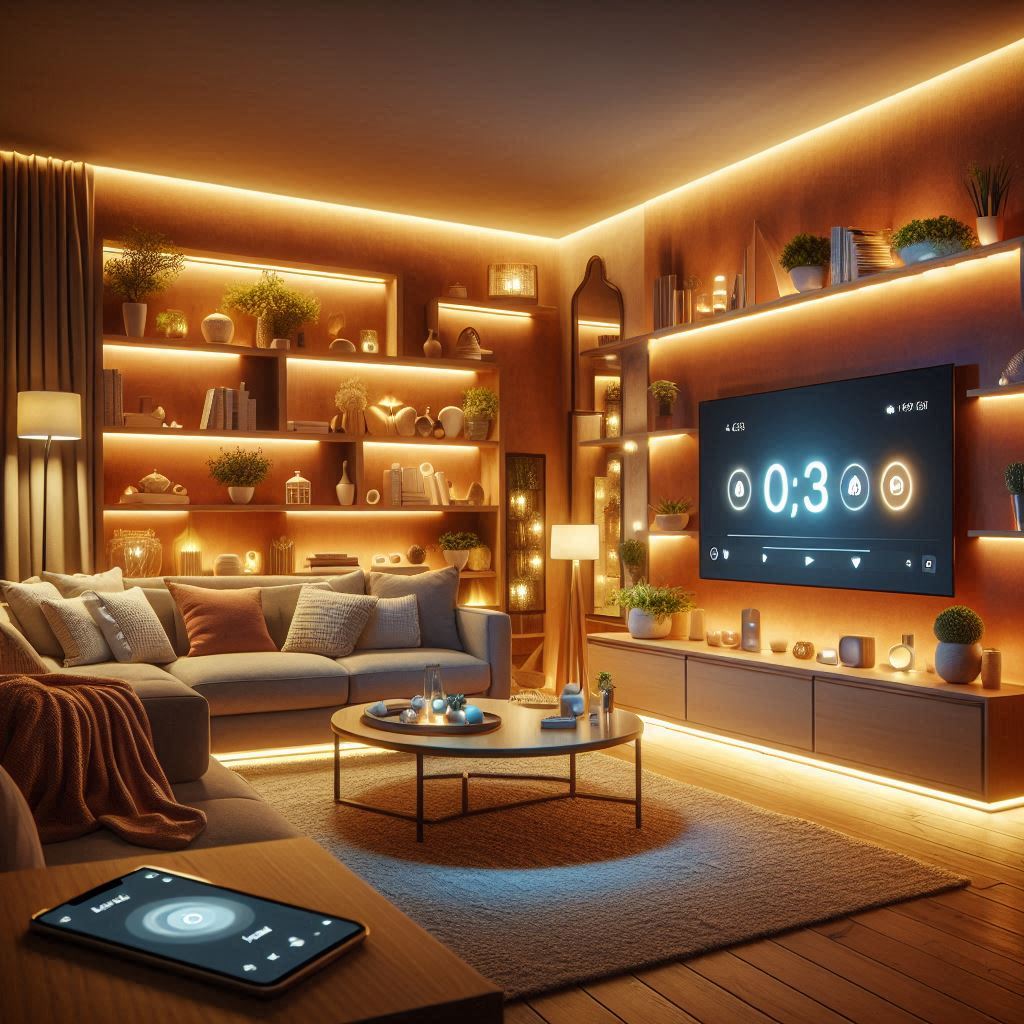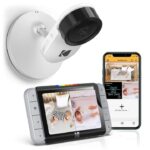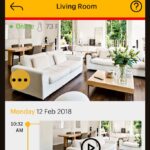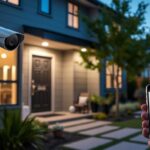Are you tired of high electricity bills? Want to make your home feel cozier? Good lighting can do both. In this guide, we’ll show you simple ways to create perfect ambient lighting while saving money. Let’s make your home both beautiful and energy-smart!
Contents
- 1 What is Ambient Lighting?
- 2 Benefits of Good Ambient Lighting
- 3 Energy-Saving Lighting Solutions
- 4 Room-by-Room Lighting Guide
- 5 Smart Lighting Technologies
- 6 DIY Lighting Projects
- 7 Color Psychology in Lighting
- 8 Natural Light Enhancement
- 9 Cost Analysis and Savings
- 10 Maintenance Tips
- 11 Common Mistakes to Avoid
- 12 Seasonal Lighting Adjustments
- 13 Conclusion
What is Ambient Lighting?
Ambient lighting is the main source of light in a room. Think of it as your room’s “base” light. It’s different from task lighting (for specific activities) or accent lighting (for decoration).
Key Features of Ambient Lighting:
- Provides overall room illumination
- Creates a comfortable atmosphere
- Helps with basic activities
- Sets the room’s mood
Types of Ambient Light Sources:
- Natural Light
- Windows
- Skylights
- Glass doors
- Artificial Light
- Ceiling fixtures
- Wall-mounted lights
- Floor lamps
- Table lamps
Benefits of Good Ambient Lighting
For Your Health:
- Better sleep patterns
- Less eye strain
- Improved mood
- Reduced headaches
- Enhanced productivity
- Better concentration
- Reduced seasonal depression
For Your Home:
- Creates a welcoming atmosphere
- Makes rooms look bigger
- Highlights room features
- Increases property value
- Improves home security
- Better photo quality
- Enhanced interior design
For Your Wallet:
- Lower energy bills
- Reduced maintenance costs
- Better bulb lifespan
- Higher home resale value
- Decreased HVAC costs
- Lower replacement frequency
- Better insurance rates
Energy-Saving Lighting Solutions
Popular Energy-Efficient Bulb Types:
| Bulb Type | Lifespan (hours) | Energy Use (watts) | Yearly Cost* |
|---|---|---|---|
| LED | 25,000 | 8-12 | $15 |
| CFL | 10,000 | 13-15 | $18 |
| Halogen | 2,000 | 43 | $50 |
| Incandescent | 1,200 | 60 | $75 |
*Based on 3 hours daily use at $0.12 per kWh
Best LED Bulbs for Ambient Lighting
- Warm White LEDs (2700K-3000K)
- Perfect for living rooms
- Creates cozy atmosphere
- Best for evening relaxation
- Ideal for bedrooms
- Good for dining areas
- Cool White LEDs (3500K-4100K)
- Great for kitchens
- Better for daytime use
- Helps with focus
- Perfect for bathrooms
- Suitable for laundry rooms
- Daylight LEDs (5000K-6500K)
- Ideal for home offices
- Good for reading
- Reduces afternoon sleepiness
- Best for craft rooms
- Perfect for garages
Room-by-Room Lighting Guide
Living Room
- Main Lighting Tips:
- Use dimmable ceiling lights
- Add floor lamps in corners
- Install wall sconces
- Consider rope lighting behind TV
- Layer different light sources
- Recommended Brightness:
- Main activities: 300-400 lumens
- Evening relaxation: 200-300 lumens
- Movie watching: 100-150 lumens
- Party lighting: 400-500 lumens
Bedroom
- Essential Elements:
- Bedside lamps
- Ceiling light with dimmer
- Small accent lights
- Reading lights
- Closet lighting
- Lighting Zones:
- Bed area: soft, warm light
- Dressing area: brighter, white light
- Reading corner: focused light
- Vanity: balanced lighting
Kitchen
- Key Lighting Areas:
- Counter tops
- Cooking space
- Eating area
- Sink
- Pantry
- Under-cabinet spaces
- Brightness Levels:
- Cooking: 500-750 lumens
- Dining: 300-400 lumens
- Cleanup: 450-600 lumens
- Food prep: 700-850 lumens
Home Office
- Essential Lighting:
- Desk lamp
- Overhead light
- Computer area lighting
- Video call lighting
- Recommended Settings:
- Computer work: 400-500 lumens
- Reading documents: 450-550 lumens
- Video meetings: 600-700 lumens
Smart Lighting Technologies
Popular Smart Lighting Options:
| Feature | Benefits | Average Cost | Installation Difficulty |
|---|---|---|---|
| Motion Sensors | Auto on/off | $20-40 | Easy |
| Smart Bulbs | Phone control | $15-50 | Very Easy |
| Smart Switches | Schedule lighting | $25-60 | Moderate |
| Hub Systems | Whole home control | $80-200 | Complex |
| Light Strips | Custom colors | $30-70 | Easy |
Energy Savings with Smart Lighting:
- 20-30% lower energy use
- Automatic shutoff saves money
- Custom schedules reduce waste
- Motion detection prevents forgotten lights
- Remote control capabilities
- Integration with home systems
- Usage analytics
DIY Lighting Projects
Easy Projects Anyone Can Do:
- Rope Light Installation
- Materials needed: rope lights, clips, timer
- Cost: $25-40
- Time: 1-2 hours
- Energy use: Very low
- Difficulty: Beginner
- Battery-Operated Accent Lights
- Materials: LED puck lights, batteries
- Cost: $15-30
- Time: 30 minutes
- Perfect for dark corners
- No wiring needed
- Mirror Lighting
- Materials: LED strip, adhesive, power supply
- Cost: $20-35
- Time: 1 hour
- Great for bathrooms
- Professional look
- Book Shelf Lighting
- Materials: LED strips, connectors
- Cost: $30-45
- Time: 2 hours
- Adds depth to room
- Highlights collections
Color Psychology in Lighting
Emotional Effects of Light Colors:
- Warm White (2700K-3000K)
- Promotes relaxation
- Increases comfort
- Supports social interaction
- Improves sleep quality
- Cool White (3500K-4100K)
- Boosts productivity
- Enhances focus
- Reduces drowsiness
- Improves alertness
- Daylight (5000K-6500K)
- Increases energy
- Improves mood
- Reduces SAD symptoms
- Enhances natural colors
Natural Light Enhancement
Ways to Maximize Natural Light:
- Window Treatments
- Use sheer curtains
- Install light-filtering blinds
- Add window films
- Choose light colors
- Reflection Techniques
- Place mirrors strategically
- Use glossy surfaces
- Choose light paint colors
- Add metallic accents
Natural Light Benefits:
- Zero energy cost
- Better vitamin D exposure
- Improved mood
- Enhanced plant growth
- Better sleep cycles
Cost Analysis and Savings
Initial Investment vs. Long-term Savings:
| Upgrade Type | Initial Cost | Yearly Savings | Break-even Time | Lifetime Savings |
|---|---|---|---|---|
| LED Bulbs | $100-200 | $50-100 | 2-3 years | $500-1000 |
| Smart System | $200-400 | $80-150 | 3-4 years | $800-1500 |
| Motion Sensors | $60-120 | $30-60 | 2 years | $300-600 |
| Dimmers | $40-80 | $20-40 | 2 years | $200-400 |
| Natural Light | $100-300 | $40-80 | 3 years | $400-800 |
Energy Usage Comparison
Average Monthly Energy Use (Based on 4-bedroom home):
- Traditional lighting: 300-400 kWh
- Energy-efficient setup: 150-200 kWh
- Smart lighting system: 100-150 kWh
- Natural light optimization: 80-120 kWh
Maintenance Tips
Regular Maintenance Schedule:
- Monthly Tasks:
- Dust all bulbs and fixtures
- Check for burnt-out bulbs
- Clean lampshades
- Test motion sensors
- Check timers
- Quarterly Tasks:
- Test all smart features
- Check motion sensors
- Update automation schedules
- Clean windows thoroughly
- Check outdoor fixtures
- Yearly Tasks:
- Deep clean all fixtures
- Check wiring connections
- Update smart system software
- Professional inspection
- Replace old bulbs
Troubleshooting Common Issues:
- Flickering Lights
- Check bulb connection
- Look for loose wiring
- Test dimmer compatibility
- Inspect fixture condition
- Smart System Problems
- Restart the hub
- Check WiFi connection
- Update all apps
- Reset devices
- Contact support
Common Mistakes to Avoid
- Lighting Placement Errors:
- Too few light sources
- Poor spacing
- Wrong height installation
- Unbalanced distribution
- Color Temperature Mistakes:
- Mixing warm and cool lights
- Wrong temperature for room use
- Inconsistent color schemes
- Poor transition between spaces
- Technology Issues:
- Incompatible systems
- Overcomplicated setups
- Poor WiFi coverage
- Inadequate backup plans
Seasonal Lighting Adjustments
Summer Lighting Tips:
- Reduce artificial lighting
- Use natural light more
- Install UV-filtering films
- Adjust smart schedules
Winter Lighting Strategy:
- Increase light levels
- Use brighter bulbs
- Add task lighting
- Consider SAD lamps
- Extend lighting hours
Conclusion
Good ambient lighting makes your home cozy and saves money. Start with small changes like LED bulbs. Add smart features when you can. Remember to maintain your lighting system. With these tips, you’ll have a perfectly lit, energy-efficient home.
Want more tips? Talk to a lighting expert or visit your local home improvement store. Your perfect lighting solution is just a few changes away!



